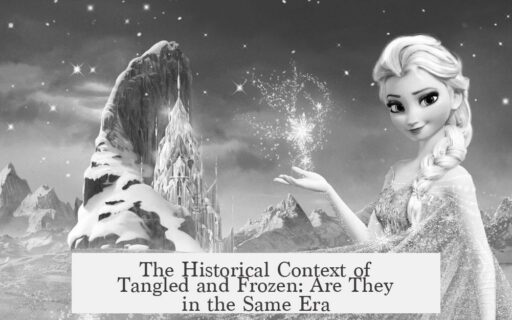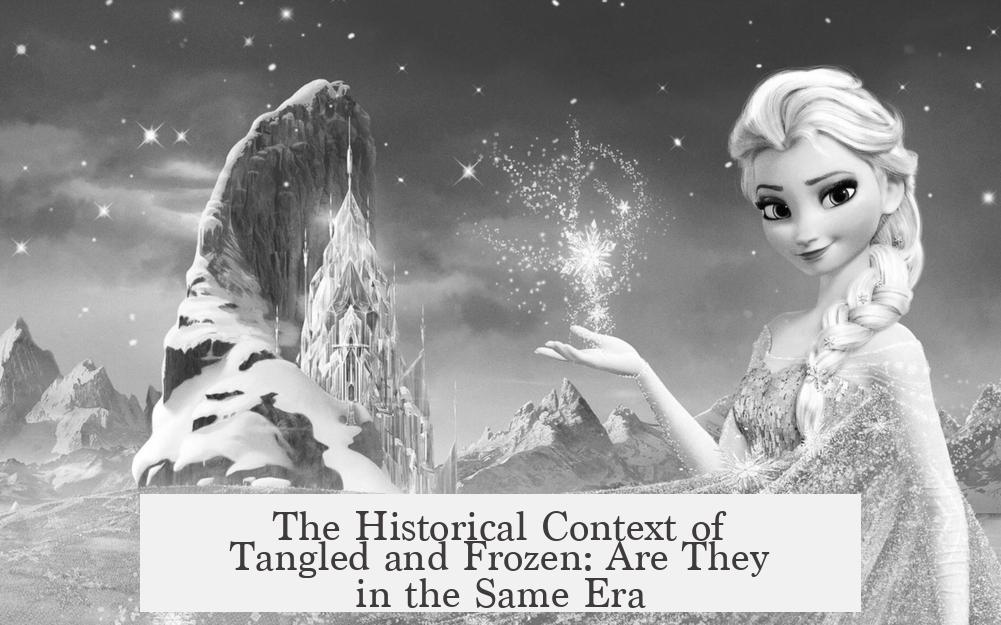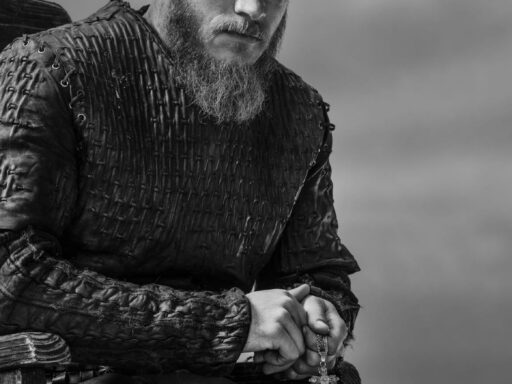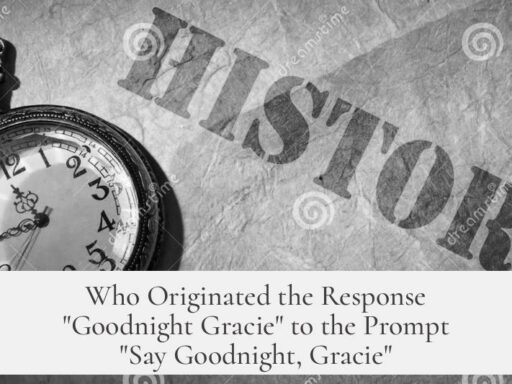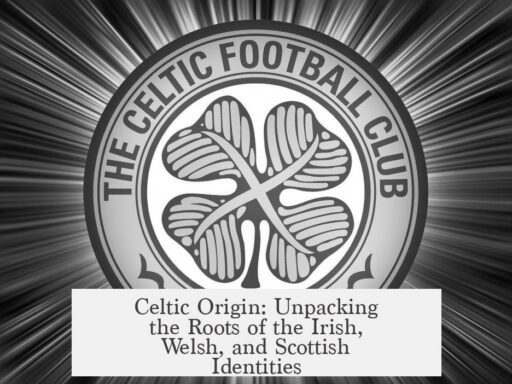The movies Tangled and Frozen take place primarily in the 19th century, with Tangled occurring slightly before Frozen, around the 1830s to 1840s period. This timeframe aligns with several pieces of evidence, including the visual style, historical references, and official statements from creators and researchers. The timeline connecting both movies is also supported by character cameos and shared story elements.
Both films exist in a shared universe, as confirmed by the appearance of Rapunzel and Flynn Rider in Frozen. According to a widely accepted timeline theory, Anna and Elsa’s parents were traveling to Rapunzel and Flynn’s wedding when they tragically died. This suggests that the events of Tangled precede Frozen by roughly three years.
The art and costume design strongly place Frozen in the second quarter of the 19th century. Charles Solomon’s book, The Art of Frozen, explicitly dates the movie’s style and influences to the 1840s. Costume designer Jean Gillmore also confirms the melding of 1840 Western European silhouettes with 19th-century Norwegian folk costumes. This combination grounds the setting firmly in the early industrial era of Europe.
Additional cultural and technological clues support the 19th-century setting in Frozen:
- Bicycles appear as transport, a technology formally introduced in the early 1800s and popularized gradually afterward.
- Chocolates, as shown in the film, were unavailable before the late 1700s but became common in the early 19th century.
- The presence of foreign dignitaries from Germany and Ireland fits the political landscape post-1815, after the German Confederation was established.
- The absence of steamships, replaced by sailing vessels, suggests the film happens before 1860, narrowing the window roughly to 1830-45.
The timeline for Tangled is somewhat debated. Officially, creators claimed it set in the 1780s; however, this conflicts with visual and historical evidence. For example, books shown in the movie, like The Little Mermaid, were published in the 1830s, not the late 18th century. Fashion historians note that clothing styles in Tangled resemble those of the early to mid-19th century more than the late 1700s.
Mother Gothel’s character adds complexity. Her attire resembles Renaissance fashion from 15th-16th century Germany, placing her origins significantly earlier. She implies she has survived several centuries by magic, meaning that Rapunzel’s story would unfold centuries later, consistent with the 18th or 19th century era established by the other evidence.
Rapunzel and Flynn’s cameo in Frozen effectively ties the two timelines together. Since Frozen has an accepted 1840s setting, it places Tangled either slightly before or around the same time. Considering the storyline of character relationships, the early 1840s is a safe period for Tangled.
There is an alternative theory suggesting Frozen takes place in modern times, post-1975. This is based on Elsa’s song lyric containing the word ‘fractal,’ a term coined by Benoît Mandelbrot in 1975. While intriguing, this theory is speculative and conflicts with most visual and cultural evidence provided by the films and official sources.
The core evidence favors a 19th-century setting for both movies, especially considering the consistent portrayal of technology, fashion, politics, and cultural details. The connection in narratives and characters also aligns with this timeline, making it the most plausible.
- Frozen is set in the 1840s, as supported by official art books and costume design.
- Tangled takes place slightly before or around the early 1840s, inferred from character cameos and thematic ties.
- Material culture such as bicycles, chocolates, and political entities like the German Confederation support this timeframe.
- Mother Gothel’s Renaissance-inspired attire suggests she is much older, linking Rapunzel’s story centuries later.
- Alternative modern-era theories exist but contradict most historical and artistic evidence.
In Which Era Does the Movie Tangled and Frozen Take Place?
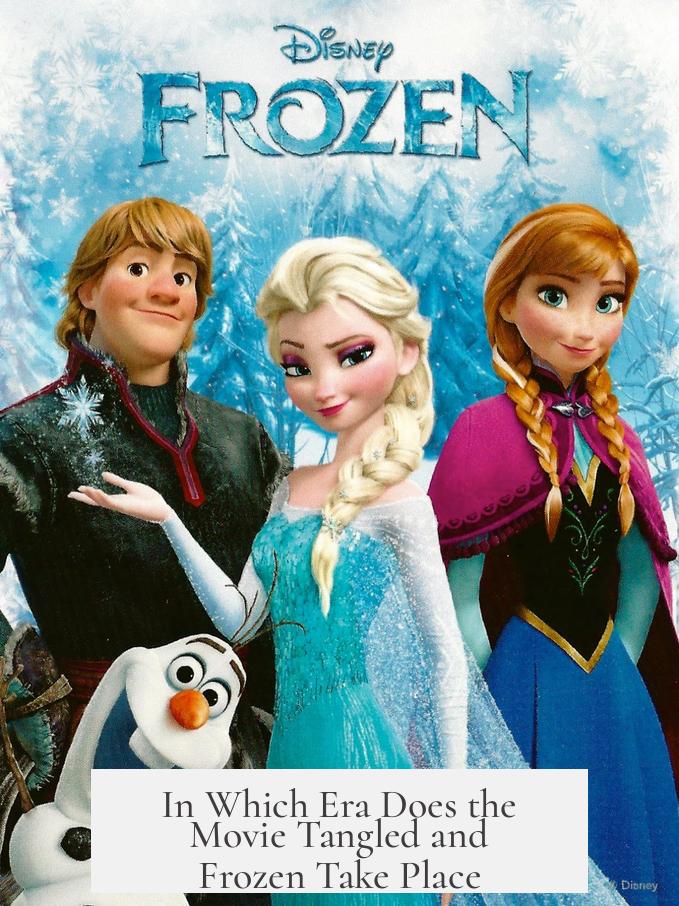
So, what era do Tangled and Frozen really take place? The popular and most accepted theory places Tangled a few years before Frozen, roughly in the 1830s to 1840s. This connection isn’t just fan speculation; it has roots in both official statements and subtle clues sprinkled throughout the films.
Let’s dive into this fascinating timeline puzzle!
Are Tangled and Frozen Connected?
Many fans noticed Rapunzel and Flynn making a cameo in Frozen. One popular theory suggests Anna and Elsa’s parents were actually on their way to Rapunzel and Flynn’s wedding when tragedy struck. That means Tangled occurs roughly three years before the main storyline of Frozen.
This idea builds a beautiful bridge between the two films, suggesting a shared universe—a rare treat in Disney’s fairy tale canon, where timelines usually float in the clouds.
What Era Does Frozen Officially Take Place In?
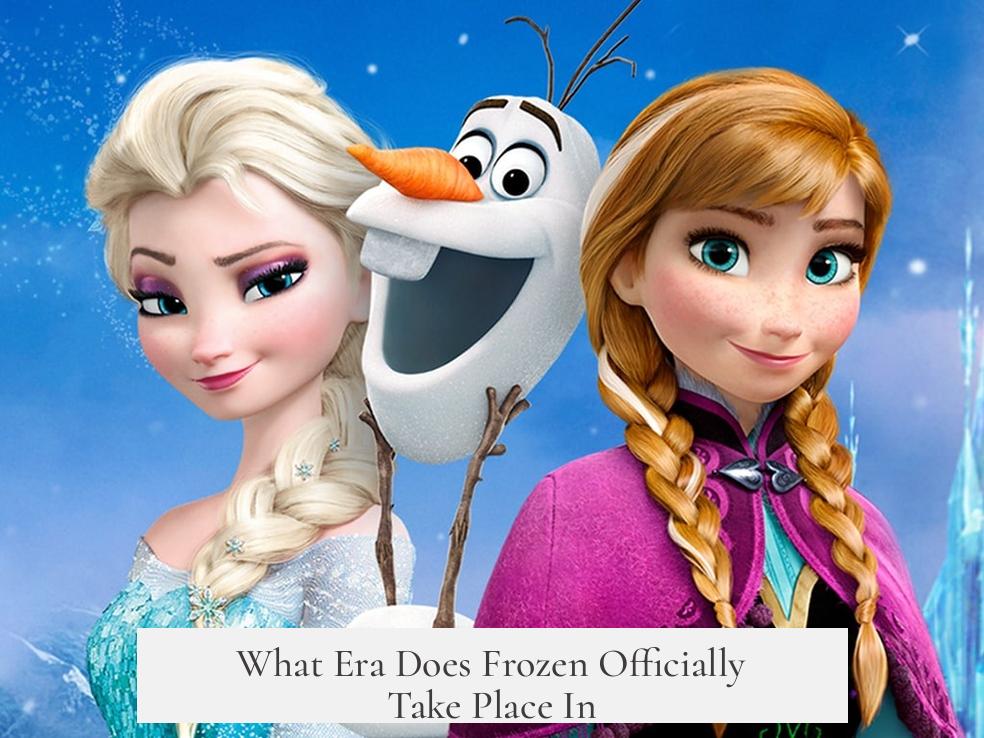
The best official source is The Art of Frozen by Charles Solomon. According to him, Frozen takes place firmly in the 1840s. This timeframe is no random guess—it’s backed up by the film’s design, cultural elements, and costume choices.
Jean Gillmore, the costume designer, openly mentioned blending 1840 Western European silhouettes with 19th-century Norwegian folk costume. This mix gives Frozen a historical yet culturally unique aesthetic rooted in the mid-19th century.
Material Culture Clues That Back the 19th Century Setting
- Bicycles: Surprised to see a bicycle in Arendelle? Yep, they exist! Bicycles emerged in the early 19th century and only became widespread later. So the presence of a bicycle confirms a post-1820s setting.
- Chocolates and Diplomats: The film shows chocolates, which appeared in forms known only in late 1700s onward. The foreign dignitaries identified as ambassadors from Germany and Ireland fit perfectly in an 1815+ world context, considering the German Confederation’s establishment date.
- Ships, or rather, the absence of steamships: Arendelle’s visitors use sailing ships, not steamships, which became common after 1860. This narrows down the timeline to roughly 1830–1845.
But What About Tangled? Is It the Same Era?
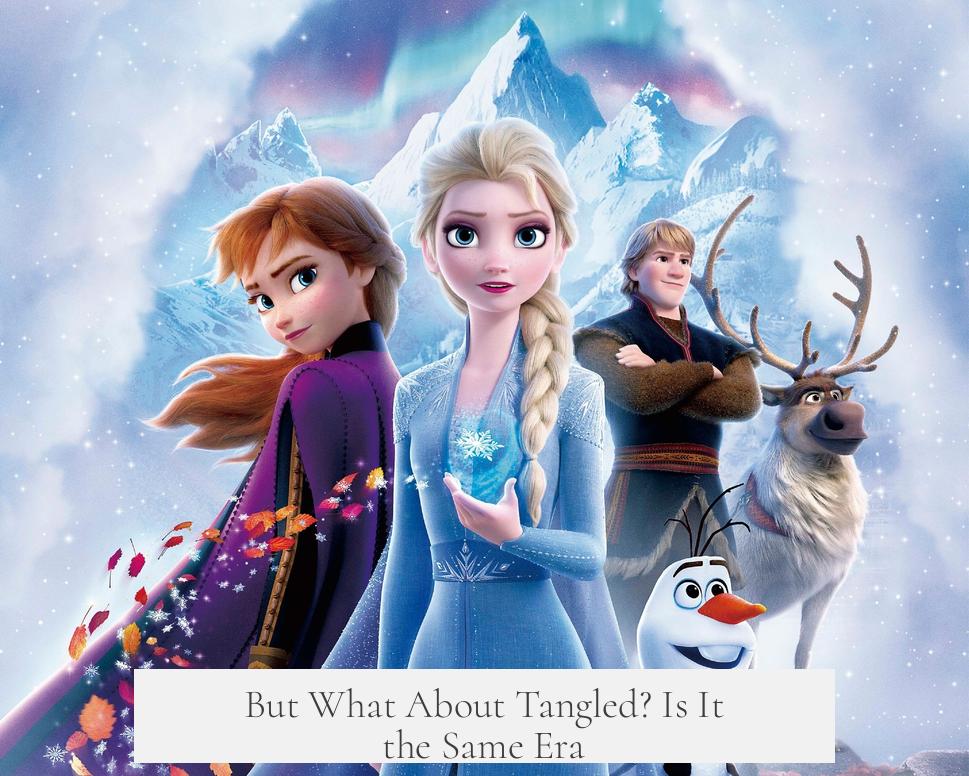
Here’s where things get interesting. Officially, the makers of Tangled pin the movie in the 1780s. And yet, the evidence on-screen tells another story.
Books like The Little Mermaid appear in Rapunzel’s tower. Hans Christian Andersen’s story was published in 1837, suggesting the setting might be a bit later. The costumes and scenery also look closer to the early-to-mid 19th century.
So, is Tangled an 18th-century throwback or a 19th-century story? Based on Rapunzel’s cameo in Frozen (set in the 1840s), it’s safe to say both movies overlap around the 1830s-1840s.
What Does Mother Gothel’s Dress Say About the Timeline?
Mother Gothel’s attire looks more Renaissance than romantic 19th century. The Renaissance in Germany (where Tangled is set) was in the 15th and 16th centuries. Gothel claims centuries passed before she kidnapped Rapunzel, implying more than 100 years have passed.
So while Gothel may be older than your average villain, her survival ties the story into the late 18th or early 19th century. That helps reinforce that Tangled fits comfortably within—or just before—the era of Frozen.
An Out-There Theory: Could Frozen Be Modern?
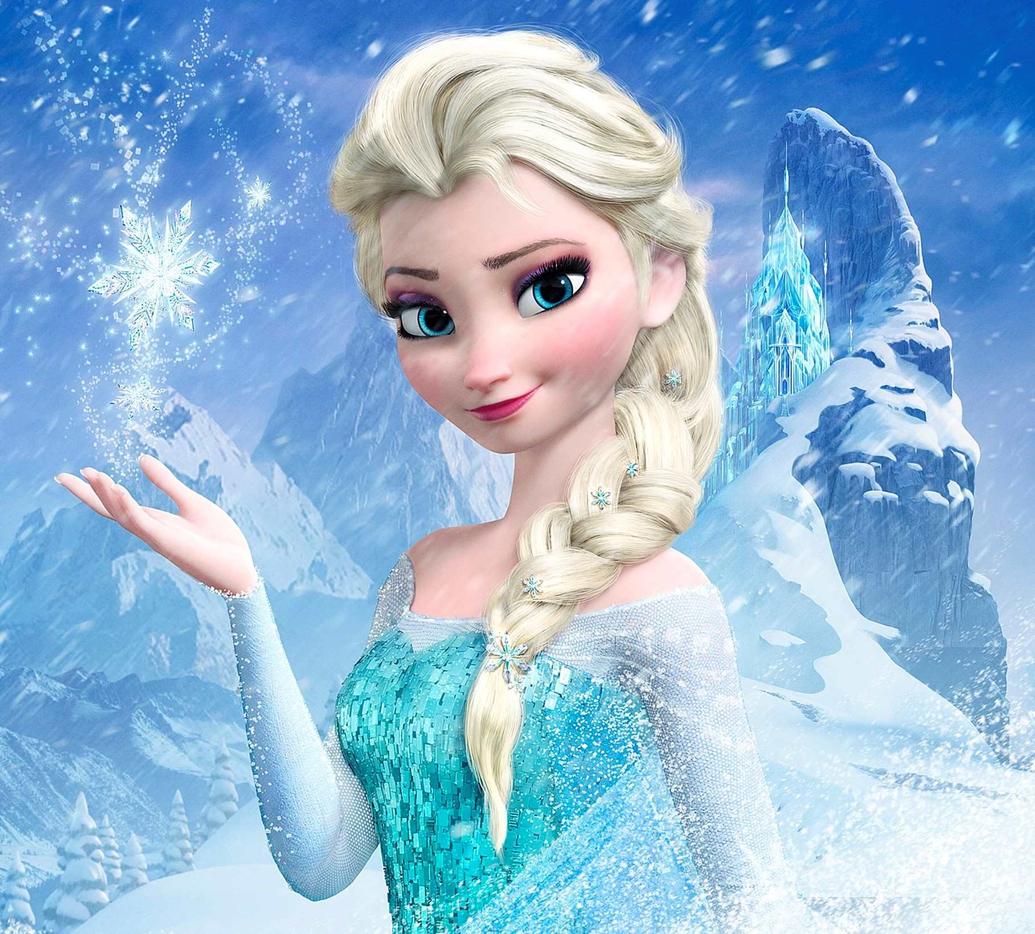
Brace yourself for a wild theory. Some fans propose Frozen might actually take place in modern times, post-1975. The kicker? Elsa’s song includes the word “fractal,” which was only coined in mathematics around 1975 by Benoît Mandelbrot.
If true, this would turn everything we thought about Frozen’s setting upside down. Imagine Arendelle with Wi-Fi and SUVs hidden behind the snow-dusted mountains! Still, this remains an extreme, unofficial interpretation, generally overshadowed by stronger 19th-century evidence.
So, What’s the Final Verdict?
Tangled most likely takes place a few years before Frozen, somewhere between the 1830s and 1840s. This placement fits the official art and costume design, cultural references, and the cameo connection. Despite the original claims for an 18th-century setting, the preponderance of evidence places both films squarely in the 19th century.
This era is rich with fascinating historical context: the dawn of bicycles, elegant folk costumes, chocolates becoming a popular luxury, and blossoming European diplomacy. These subtle clues create a charming, believable backdrop for Disney’s enchanting worlds.
Why Does This Matter?
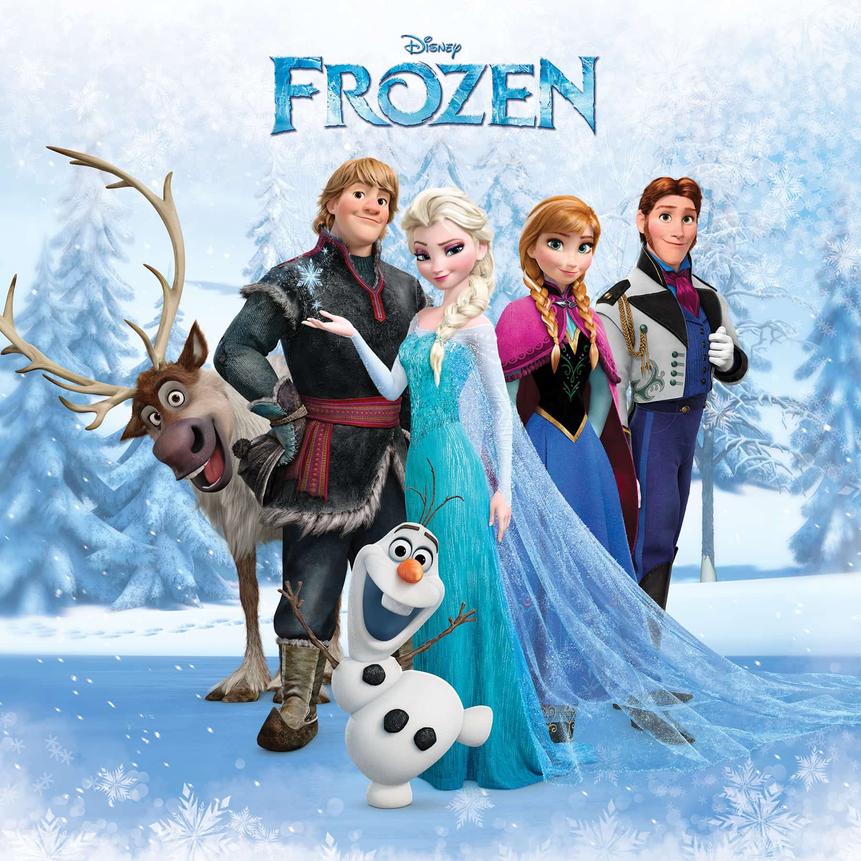
Understanding the timeline enriches our appreciation for these films. It clarifies character backgrounds and subtle cultural cues. It helps us appreciate Disney’s artistic effort in fusing historical elements with fairy tale magic.
Next time you watch, look carefully at the costumes, the modes of transport, even the books! Small details tell big stories.
One Final Thought
Whether you love the 19th-century charm or prefer the mid-1700s setting for Tangled, Disney films are full of magic that transcends time. These subtle historical touches make the stories feel grounded even amid castles, magic, and singing snow queens.
So, what era do you see? The bustling 1830s or a modern frozen fantasy? Either way, let the story warm your heart.
In which era is the movie Frozen set?
Frozen is mainly set in the 1840s. The costume design and material culture fit with early 19th-century Western Europe and Norway. Historical details like bicycles and foreign ambassadors confirm this timeframe.
When does Tangled take place in relation to Frozen?
Tangled likely happens about three years before Frozen. Rapunzel and Flynn appear in Frozen, connecting the two stories. This places Tangled in the 1830s or 1840s, close to Frozen’s era.
Why do some sources say Tangled is set in the 1780s?
Disney creators mentioned the 1780s, but clothing and cultural details suggest a later date. Books and fashion in the film align better with early to mid-19th century styles.
What evidence ties Tangled to the Renaissance period?
Mother Gothel wears Renaissance-style clothes and mentions centuries passing since she kidnapped Rapunzel. This suggests Gothel lived across centuries, but the main story is in the 18th or 19th century.
Is there an alternate theory about Frozen’s time setting?
Yes, one theory suggests Frozen is set in modern times, post-1975, based on Elsa’s use of the word “fractal.” However, this contrasts with most historical evidence in the film.
